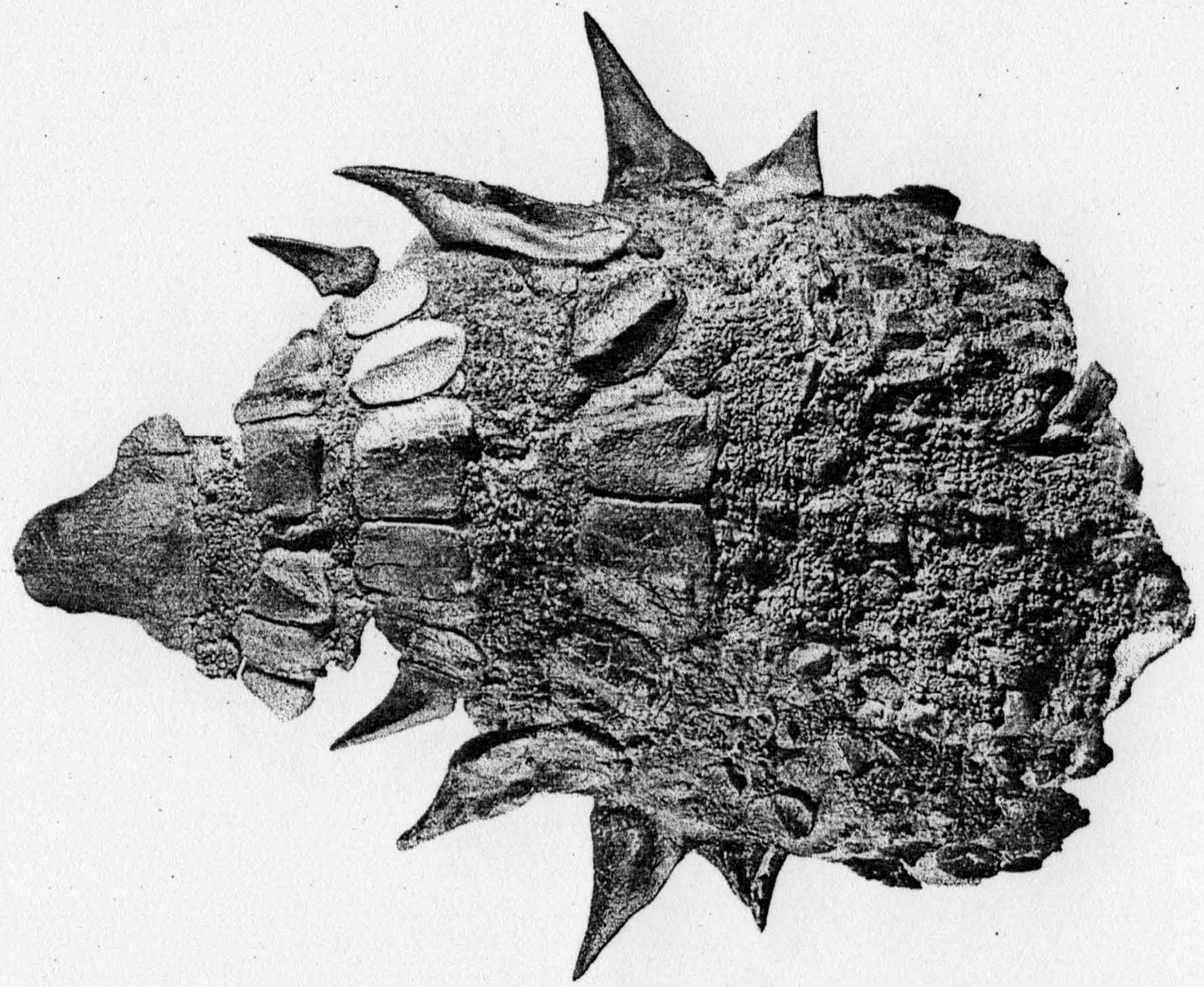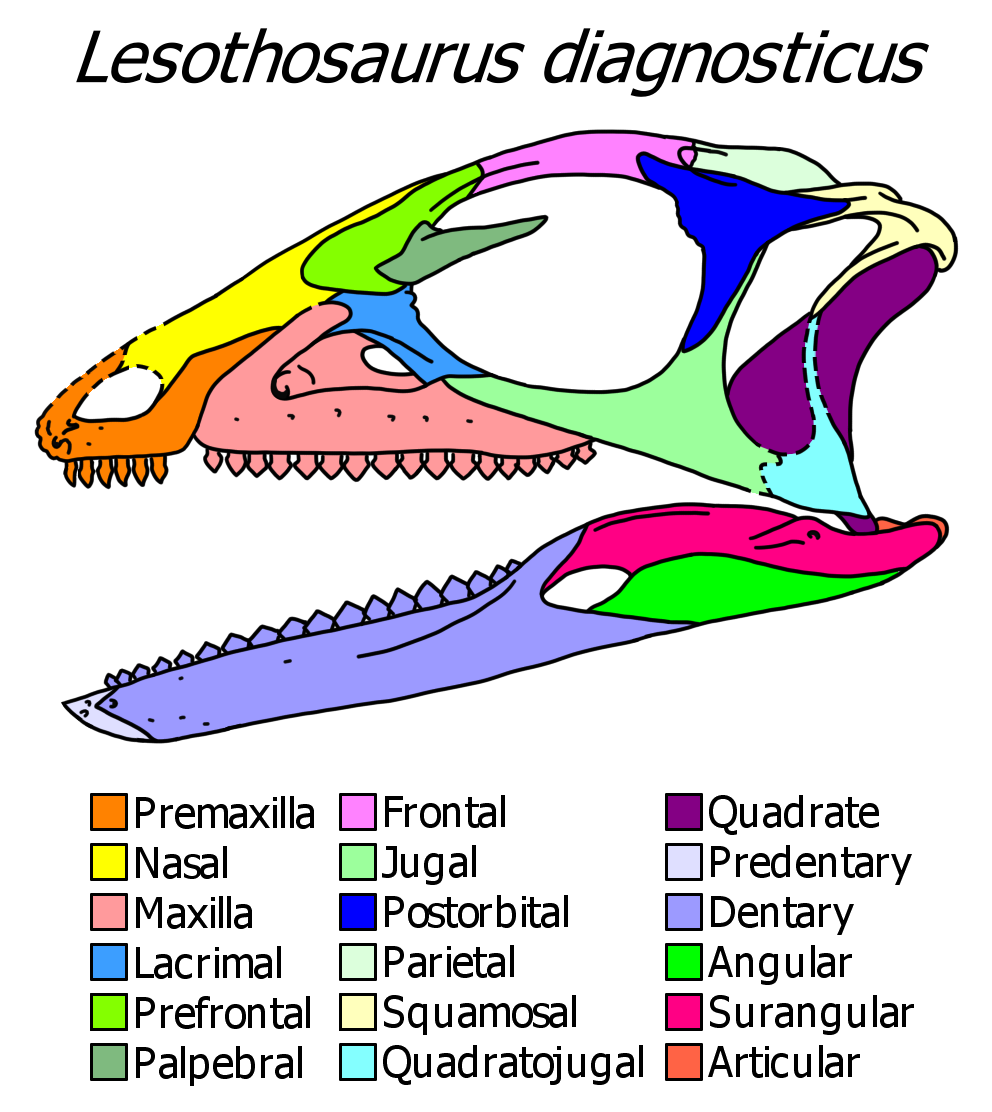|
Polacanthus
''Polacanthus'', deriving its name from the Ancient Greek polys-/πολύς- "many" and akantha/ἄκανθα "thorn" or "prickle", is an early armoured, spiked, plant-eating ankylosaurian dinosaur from the early Cretaceous period of England. In the genus ''Polacanthus'' several species have been named but only the type species ''Polacanthus foxii'' is today seen as valid. ''Polacanthus'' was a quadrupedal ornithischian or "bird-hipped" dinosaur. It lived 130 to 125 million years ago in what is now western Europe.Holtz, Thomas R. Jr. (2012) ''Dinosaurs: The Most Complete, Up-to-Date Encyclopedia for Dinosaur Lovers of All Ages,''https://www.geol.umd.edu/~tholtz/dinoappendix/appendix.html ''Polacanthus foxii'' was named after a find on the Isle of Wight in 1865. There are not many fossil remains of this creature, and some important anatomical features, such as its skull, are poorly known. Early depictions often gave it a very generic head as it was only known from the rear half of ... [...More Info...] [...Related Items...] OR: [Wikipedia] [Google] [Baidu] |
Mymoorapelta
''Mymoorapelta'' (Meaning "Shield from the Mygatt-Moore Quarry" after a combination of the names of the discoverers of the Mygatt-Moore Quarry that fossils were originally collected from, and the Greek word πέλτα, meaning "shield") is a Nodosauridae, nodosaurid ankylosaur from the Late Jurassic (Kimmeridgian-Tithonian, around 155 to 150 million years ago) Morrison Formation (Brushy Basin Member) of western Colorado and central Utah, United States, USA. The animal is known from a single species, ''Mymoorapelta maysi'', and few specimens are known. The most complete specimen is the holotype individual from the Mygatt-Moore Quarry, which includes , a partial , , and other bones. It was initially described by James Kirkland (paleontologist), James Kirkland and Kenneth Carpenter in 1994. Along with ''Gargoyleosaurus'', it is one of the earliest known nodosaurids. ''Mymoorapelta'' is one of the smaller known nodosaurids, with the estimated length of the largest specimen only reach ... [...More Info...] [...Related Items...] OR: [Wikipedia] [Google] [Baidu] |
Nodosauridae
Nodosauridae is a family of ankylosaurian dinosaurs known from the Late Jurassic to the Late Cretaceous periods in what is now Asia, Europe, North America, and possibly South America. While traditionally regarded as a monophyletic clade as the sister taxon to the Ankylosauridae, some analyses recover it as a paraphyletic grade leading to the ankylosaurids. Description Nodosaurids, like their sister group the ankylosaurids, were heavily armored dinosaurs adorned with rows of bony armor nodules and spines (osteoderms), which were covered in keratin sheaths. Ankylosaurians were small- to large-sized, heavily built, quadrupedal, herbivorous dinosaurs, possessing small, leaf-shaped teeth. Unlike ankylosaurids, nodosaurids lacked mace-like tail clubs and instead had more flexible tail tips. Many nodosaurids had spikes projecting outward from their shoulders. One particularly well-preserved nodosaurid "mummy", the holotype of '' Borealopelta markmitchelli'', preserves a nearly comple ... [...More Info...] [...Related Items...] OR: [Wikipedia] [Google] [Baidu] |
Polacanthoides
''Polacanthoides'' (meaning ''like Polacanthus'') is an invalid genus of nodosaurid dinosaur from Europe. It lived about 140 to 135 million years ago in what is now England. It was named by Nopsca in 1928. The type specimen is NHMUK 2584. It is a junior synonym of both ''Hylaeosaurus'' and ''Polacanthus'' and was based on a chimera of skeletal elements. See also * Timeline of ankylosaur research This timeline of ankylosaur research is a chronological listing of events in the History of paleontology, history of paleontology focused on the ankylosaurs, quadrupedal herbivorous dinosaurs who were protected by a covering bony plates and spik ... References Nodosauridae Dinosaur genera Barremian dinosaurs Taxa named by Franz Nopcsa von Felső-Szilvás Fossil taxa described in 1928 Dinosaurs of the United Kingdom {{Ornithischian-stub ... [...More Info...] [...Related Items...] OR: [Wikipedia] [Google] [Baidu] |
Ankylosaur
Ankylosauria is a group of herbivorous dinosaurs of the clade Ornithischia. It includes the great majority of dinosaurs with armor in the form of bony osteoderms, similar to turtles. Ankylosaurs were bulky quadrupeds, with short, powerful limbs. They are known to have first appeared in North Africa during the Middle Jurassic, and persisted until the end of the Late Cretaceous. The two main families of ankylosaurians, Nodosauridae and Ankylosauridae primarily originated from the Northern Hemisphere (North America, Europe and Asia), but the more basal Parankylosauria originated from southern Gondwana ( South America, Australia and Antarctica) during the Cretaceous. Ankylosauria was first named by Henry Fairfield Osborn in 1923.Osborn, H. F. (1923). "Two Lower Cretaceous dinosaurs of Mongolia." ''American Museum Novitates'', 95: 1–1/ref> In the Linnaean classification system, the group is usually considered either a suborder or an infraorder. It is contained within ... [...More Info...] [...Related Items...] OR: [Wikipedia] [Google] [Baidu] |
Gastonia (dinosaur)
''Gastonia'' is a genus of herbivorous ankylosaurian dinosaur from the Early Cretaceous of North America, around 139 to 125.77 million years ago. It is often considered a nodosaurid closely related to ''Polacanthus''. ''Gastonia'' has a sacral shield and large shoulder spikes. Discovery and species The type specimen of ''Gastonia burgei'' ( CEUM 1307) was discovered in a bonebed from the limestone strata of the lower Cedar Mountain Formation in Yellow Cat Quarry, Grand County, eastern Utah, the type specimen consisting of a single skull. The type specimen was found alongside 4 partial skeletons of ''Gastonia that'' were placed as paratypes, along with the type specimen of '' Utahraptor'' and an iguanodontid. ''Gastonia'' is among the most common dinosaur fossils in the Cedar Mountain Formation, with many individuals being found across several quarries in the southwest.Kirkland, J.I. (1998). A polacanthine ankylosaur (Ornithischia: Dinosauria) from the Early Cretaceous (Barre ... [...More Info...] [...Related Items...] OR: [Wikipedia] [Google] [Baidu] |
Ornithischian
Ornithischia () is an extinct clade of mainly herbivorous dinosaurs characterized by a pelvic structure superficially similar to that of birds. The name ''Ornithischia'', or "bird-hipped", reflects this similarity and is derived from the Greek stem ' (), meaning "bird", and ' (), meaning "hip". However, as theropod dinosaurs, birds are only distantly related to this group. Ornithischians with well known anatomical adaptations include the ceratopsians or "horn-faced" dinosaurs (e.g. ''Triceratops''), the pachycephalosaurs or "thick-headed" dinosaurs, the armored dinosaurs (Thyreophora) such as stegosaurs and ankylosaurs, and the ornithopods. There is strong evidence that certain groups of ornithischians lived in herds, often segregated by age group, with juveniles forming their own flocks separate from adults. Some were at least partially covered in filamentous (hair- or feather- like) pelts, and there is much debate over whether these filaments found in specimens of '' Tianyulong ... [...More Info...] [...Related Items...] OR: [Wikipedia] [Google] [Baidu] |
William Fox (palaeontologist)
William Fox (9 August 1813 – 1881) was an English clergyman and palaeontologist who worked on the Isle of Wight and made some significant discoveries of dinosaur fossils. The Reverend William Fox was born in Cumberland on 9 August 1813. He moved to the Isle of Wight in 1862 to take up the post of curate at the Parish church of St Mary the Virgin in Brixton (now known as Brighstone). He resigned his post in 1867 but continued to live in the area to carry on his collecting. In 1875, he became curate of nearby Kingston, near Shorwell.p15 The Complete Dinosaur by James Orville Farlow, M. K. Brett-Surman Although lacking formal scientific training Fox was remarkably astute and discussed his findings with eminent palaeontologists of the day including John Hulke (1830-1895) and Sir Richard Owen (1804-1892). Fox had easy access to Brighstone Bay from his home, Myrtle Cottage in Brighstone, and so spent many an hour collecting fossils, much to the detriment of his pastoral work; in ... [...More Info...] [...Related Items...] OR: [Wikipedia] [Google] [Baidu] |





